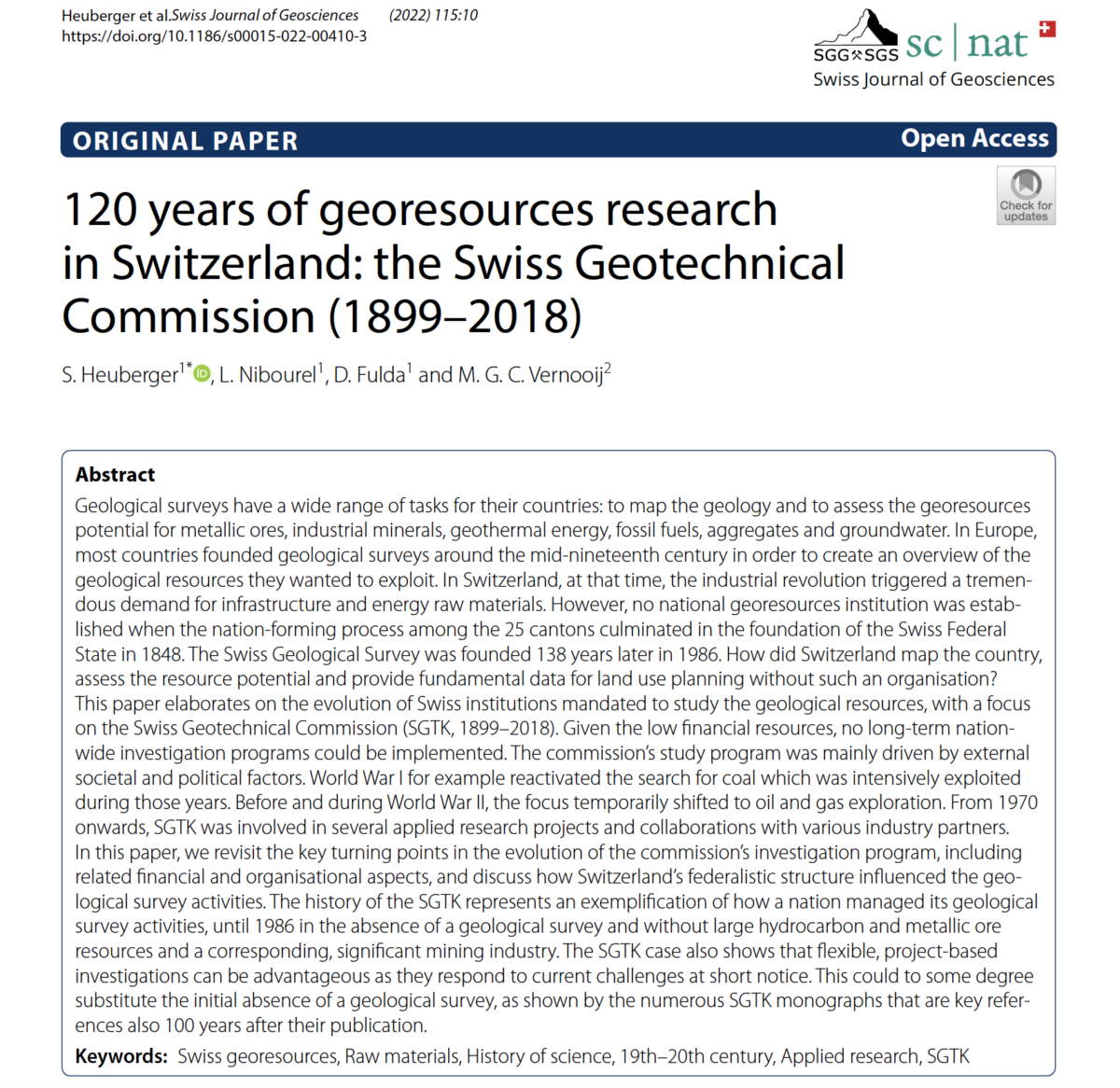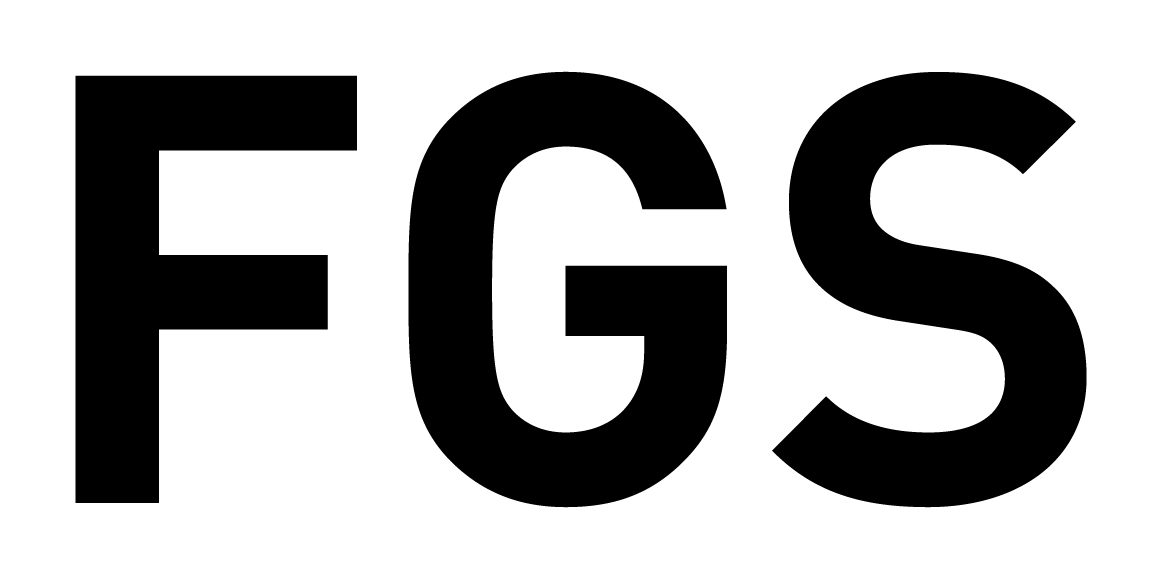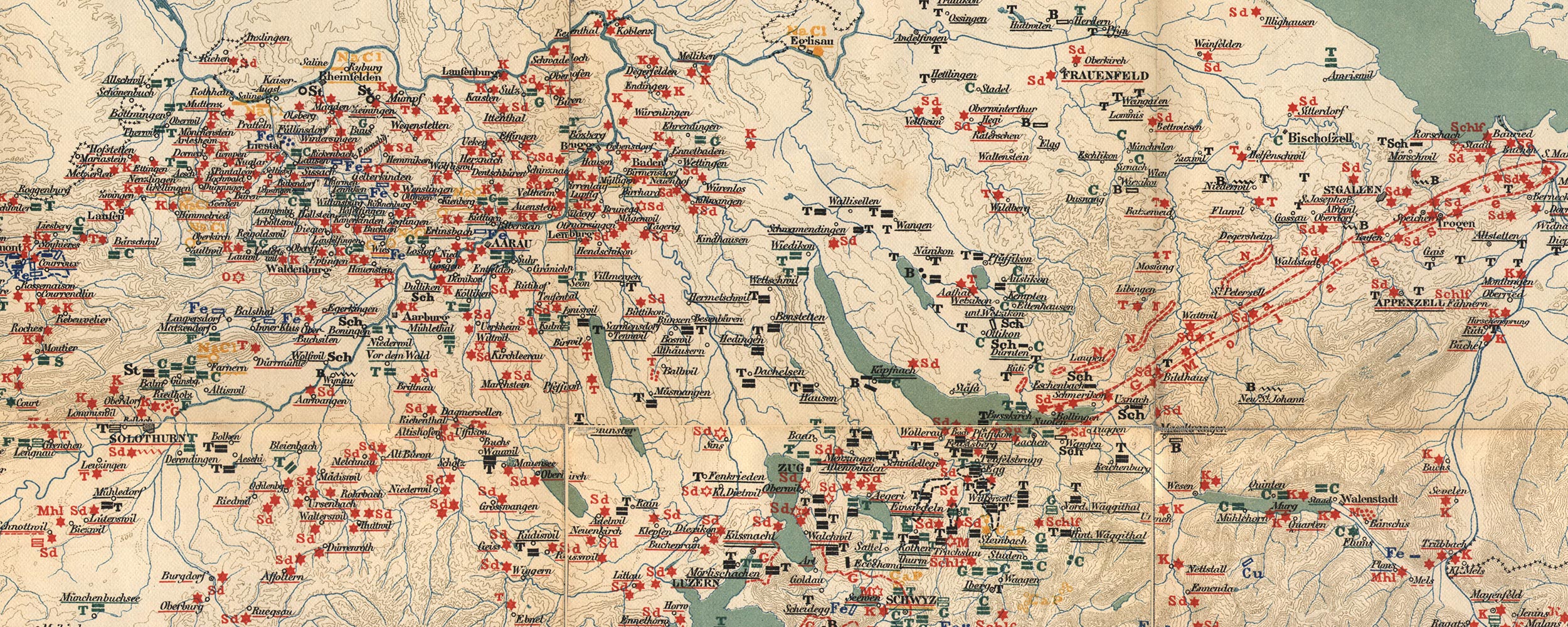
» Mid to late 19th century: private and public research on georesources
» From 1899 to 2018: the Swiss Geotechnical Commission (SGTK)
» Today, since 2018: the Georesources Switzerland Group
Mid to late 19th century: private and public research on georesources
Swiss georesources were firstly documented as becoming a major national issue during the national exhibitions (Landesausstellungen) 1883 in Zürich and 1896 in Geneva. In the mid 19th century, many European countries founded geological surveys in order to provide base data for the exploitation of geological resources. In Switzerland, research and data compilations were coordinated by the Swiss Geological Commission (SGC), founded in 1860 by the Schweizerische Naturforschende Gesellschaft (e.g. Nabholz & Spicher 1973), today the Swiss Academy of Sciences (SCNAT). In the framework of the exhibitions, a mineral resources map of Switzerland (Weber & Brosi 1883), a comprehensive monograph on construction material (Meister et al. 1884) and several other fundamental datasets on Swiss geology and georesources were published. These activities, among others, led to the establishment of several organisations looking after georesources. Swiss industrialists founded the Swiss Coal Drilling Society in 1874. This private organisation was succeeded by the Swiss Coal Commission in 1892 as subcommission of the SGC.
From 1899 to 2018: the Swiss Geotechnical Commission (SGTK)
In 1899, the Swiss Geotechnical Commission (SGTK) was founded by the Swiss Federation as another subcommission of the SGC. Based on a motion by the Council of States (1897) and the National Council (1898), the Swiss Federal Council examined the application to “study and document the precise knowledge of the occurrences, geological conditions and chemical-physical properties of Switzerland’s mineral raw materials”. On 13 May 1899, the Federal Department of Home Affairs convened the first meeting of the new SGTK. In 1909, the SGTK was transformed from a sub-commission of the SGC into an independent commission of the Swiss Academy of Sciences (SNG) (e.g. Grubenmann 1915).
Since then, the commission’s president was always a professor of an earth science institute of ETH Zürich. SGTK’s office was located first at EMPA Dübendorf until 1927 when it was moved to ETH Zürich, to NO building of the today’s Department of Earth Sciences.
From 1899 to 2012, SGTK published more than 100 technical reports of Swiss georesources in the series “Beiträge zur Geologie der Schweiz – Geotechnische Serie”. Until 1925, main research focus was on hydrocarbons, 1925 it switched to mainly metallic raw materials with a short interlude of hydrocarbon studies during and after world war II. Around 1975, the study focus significantly diversified also including construction materials (aggregates, clay), unconsolidated rocks and Nagra’s deep drilling program.
more details see in our paper on the SGTK history here
References
- Grubenmann, U. (1915): Die Schweizerische Geotechnische Kommission. Verhandlungen der Schweizerischen Naturforschenden Gesellschaft 97, 185-188.
- Meister, U., Locher, F., Koch, A. & Tetmajer, L. (1884): Die Baumaterialien der Schweiz an der Landesausstellung 1883. Verlag von Cäsar Schmidt. 296 p.
- Nabholz, W. & Spicher, A. (1973): Die Reorganisation der geologischen Landesuntersuchung in der Schweiz: Orientierung über den gegenwärtigen Stand. Eclogae Geologicae Helvetiae 66, 245-253.
- Weber, J. & Brosi, A. (1883): Karte der Fundorte von Rohproducten in der Schweiz: Reproduction der von den Experten der Gruppe XVI für die schweizerische Landesausstellung 1883 hergestellten Originalkarte. J. Wurster & Cie.
Today, since 2018 – the Georesources Switzerland Group
The Georesources Switzerland Group (Fachgruppe Georessourcen Schweiz, FGS) was founded in July 2018 at ETH Zürich and succeeds the office of the Swiss Geotechnical Commission (SGTK). It processes information and conducts applied research on Swiss mineral resources and their industrial application on behalf of the federal government or in collaboration with industry partners. The group forms an associated group in the Department of Earth Sciences with the staff (7 employees) and the premises (NO F 35) being equivalent to ones of the former SGTK office. The group is more than 90% third-party funded.
The close collaboration with the Swiss Geological Survey (Federal Office of Topography swisstopo) and the Federal Office of Energy (BFE) provides a solid basis for the longterm focus of our applied research. Our group focuses on collecting and compiling fundamental geological data and data related to the use of the geological resources in Switzerland. Focus areas are the mineral resources of Switzerland (i.e. gravel, sand, clay, limestone, salt, natural building stones), energy resources from the deep underground (geothermal energy and hydrocarbons) as well as geological questions related to the use of georesources and the underground in general. The group maintains a long-lasting sample and literature archive and makes those data accessible to the public by web services (map.georessourcen.ethz.ch) and through swisstopo’s web portal (map.geo.admin.ch).
Our group has a unique position in this field of applied research in Switzerland – a field that will remain essential in the future. Extraction of raw materials is becoming increasingly complicated because of the scarcity of materials, land use conflicts and several types of emissions. In the context of the aimed energy transition, understanding the reservoir and cap rocks in the deeper Swiss underground is becoming more and more important regarding for example the utilisation of deep geothermal energy or the sequestration of CO2. Switzerland has no hydrocarbon and no substantial mining industry. Therefore, fundamental geological data on the deeper underground are still scarce. Switzerland possesses abundant mineral resources, but the country does not have the uniform mineral royalty laws that most other European countries do. Thus, the mineral resources sector suffers from a lack of systematic production and re-sources data. This hampers the generation of reliable predictions of the national resources supply situation. In this field, our group conducts essential applied research. We generate and process basic geological data to consolidate our knowledge on the Swiss geological underground and to improve the corresponding geodatabases, cartographic tools and 3D models.



